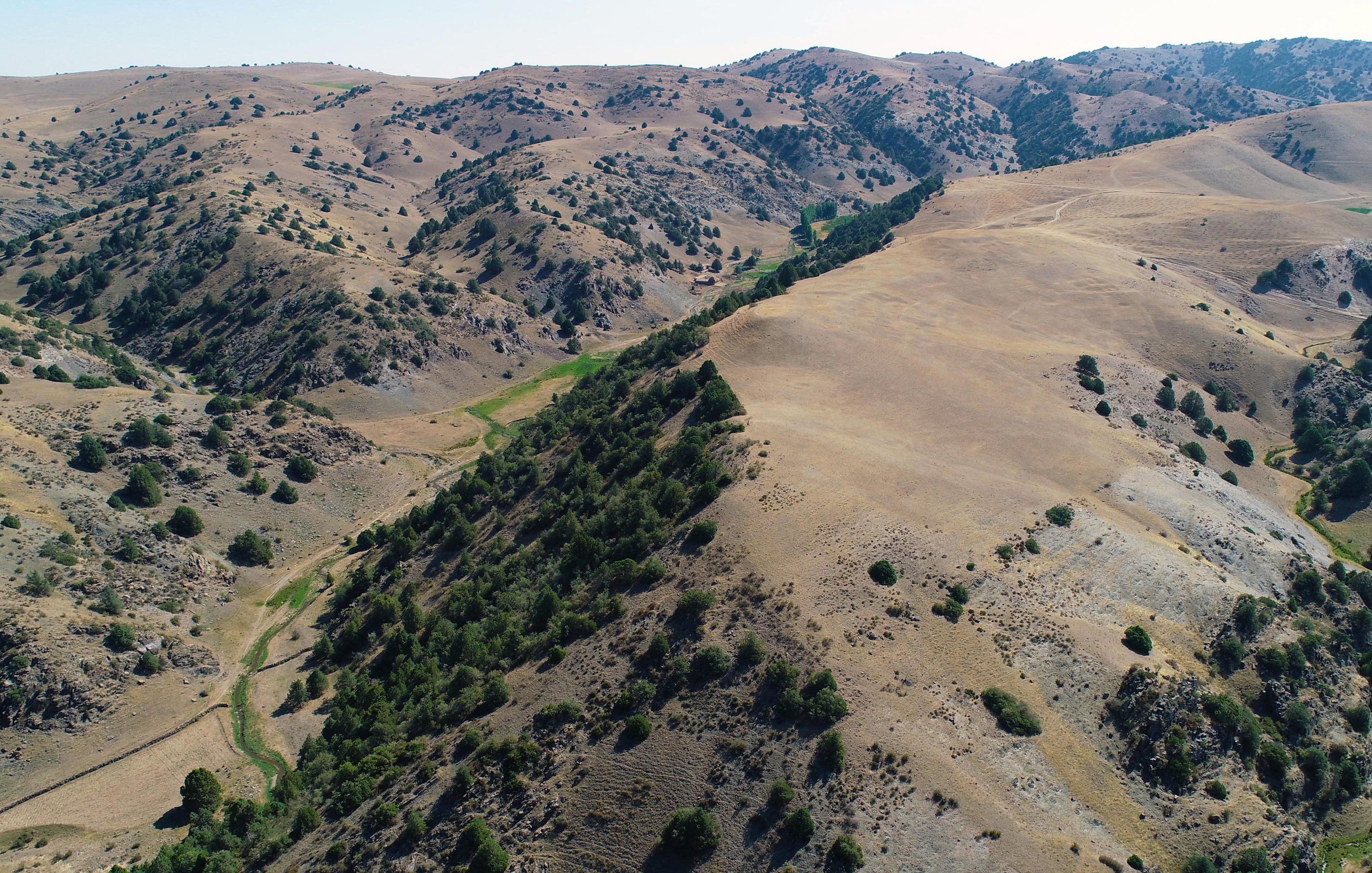Two cities that flourished as part of the Silk Road have been mapped though drone-borne LiDAR, revealing them as two of the largest cities on the mountainous part of that world-changing path, or indeed anywhere at such altitude.
The Silk Road helped make the modern world, allowing not just goods but technologies and ideas to pass between Europe and China and everything in between. Access to tools like paper and the compass helped break Europe out of the Dark Ages, but the path was not easy. The economic benefits of serving as a waypoint on the road helped cities spring up. Once trade between East and West moved onto boats, many of these cities declined and some were forgotten, but historians from elsewhere may have underestimated the significance of these cities to the surrounding areas.
In the mountains of eastern Uzbekistan, Tugunbulak and Tashbulak flourished at heights of 2,000 to 2,200 meters (6,600-7,300 feet) above sea level; far below Lhasa, but well above Kathmandu and similar to Peru’s Machu Picchu. Once abandoned however, the cities were reclaimed by the land, until Professor Michael Frachetti of Washington University in St Louis and Farhod Maksudov of Uzbekistan’s National Center of Archaeology, traced the potential routes through the mountains on foot, assisted by computer modeling.
As this drone image reveals, Tugunbulak does not look like a promising place to live, but appearances can deceive.
Image credit: Michael Frachetti
Having discovered traces of the cities in 2015 and 2011 respectively, the pair wanted to understand their scale at their peak, and led a team that used drones to find out.
Light detection and radar (LiDAR) has been used to reveal Maya cities that have been taken over by the rainforest, and the team showed it can do just as well at penetrating dust and grass as leaves. All that can be seen at the surface are mounds, but the LiDAR revealed the outline of buildings, fortifications, and open spaces in the cities. Tugunbulak covered 120 hectares (300 acres) at its peak. That might seem small by the standards of modern cities inflated by cars and trains, but was rare at the time.
The outline of Tugunbulak’s streets, plazas, and defences can be seen in this reconstruction from LiDAR overlaid on topography.
Image credit: SAIElab, J. Berner, M. Frachetti
“These would have been important urban hubs in central Asia, especially as you moved out of lowland oases and into more challenging high-altitude settings,” Frachetti said in a statement. “While typically seen as barriers to Silk Road trade and movement, the mountains actually were host to major centers for interaction. Animals, ores, and other precious resources likely drove their prosperity.”
“This site had an elaborate urban structure with specific material culture that greatly varied from the lowland sedentary culture,” Maksudov added. “It’s clear that the people inhabiting Tugunbulak […] more than a thousand years ago were nomadic pastoralists who maintained their own distinct, independent culture and political economy.”
The LiDAR data has been assembled into 3D models of the two cities, although the authors can only guess at the function of many sites without old-fashioned archaeological digging. Nevertheless, Tugunbuluk has the remains of 3-meter-thick (10-foot) rammed earth walls around what must have once been a fortress. The cities are located near rich veins of iron ore. Frachetti thinks this contained a factory where ore was turned to steel, representing the city’s key source of wealth besides trade in the sixth to 11th centuries CE.
“The Silk Road wasn’t just about the endpoints of China and the West,” Frachetti said. “Major political forces were at play in Central Asia. The complex heart of the network was also a driver of innovation.”
A preliminary dig at Tugunbulak in 2022 revealing pottery.
Image credit: Michael Frachetti
Tashbulak was around a tenth the size of Tugunbuluk and has been the site of one of the first high-altitude urban archaeological digs. The authors note that while its layout generally resembles lowland cities of the era, there is one major exception: a lack of residential areas outside the fortified walls. They propose that people lived outside these defenses, but did so only seasonally, being nomadic in the summer, and therefore may have lived in yurts that left few traces.
Tugunbuluk is just 5 kilometers (3 miles) from Tashbulak, but little digging has occurred yet.
The authors note that less than 3 percent of the world’s population today lives above 2,000 meters, reflecting the limited opportunities for agriculture and the extreme seasonality. Although the same may have been true historically, rapid erosion at these altitudes, and bias in the search for ancient cities, may have skewed our perceptions.
The team expects there are more mountain cities still to find. Drones are restricted in Uzbekistan, and permission had to be gained for their use in this research. Now that they have been shown to restore some of the nation’s history to it, the authors hope to be able to use similar processes to discover those still unknown.
The study is published in Nature.
Source Link: Lost Silk Road Mountain Cities Mapped Using LiDAR Carried By Drones
